Anthony Metivier's Blog, page 26
April 3, 2019
How to Rapidly Complete A Memory Course: Tips And Guidelines
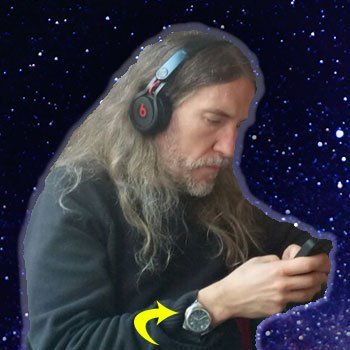 Ever signed up for a memory course or read a memory improvement book and thrown your hands up in the air?
Ever signed up for a memory course or read a memory improvement book and thrown your hands up in the air?
If so, that frustration ends today. You’re about to learn some simple guidelines for completing and benefiting from any memory training course you take.
I’ll show you how to cross any barriers or obstacles you encounter along the way too.
What kind of barriers?
How about the ugly situation where someone takes many classes and loses their notes on a computer?
I’ll share that story with you in a moment.
Better:
I’ll show you how to never lose your precious notes from the courses you take again – a hard learned lesson I hope no one ever has to suffer!
But first…
You Deserve A Big Compliment!
Let me pay you a compliment and congratulate your for your interest in completing a memory improvement course.
In fact, I’d like to pay you that compliment in person with this video:
Why the compliment?
Simple:
Not everyone is so considerate to the long-term health of their brain, nor the short-term benefits that come from learning how to train your memory.
These benefits include more than just remembering information and having more “memory power,” after all.
You’ll also experience:
Enhanced focus and concentration
Mental clarity
Improved confidence
Boosts in your professional competence
Improved emotional control
Increased critical thinking skills
And that’s just for starters.
The Key Reasons People Do Not Complete The Courses They Begin
The question is…
How are you going to get yourself to complete the course? From beginning to end? And why do you need to complete the course in such detail?
These are important questions, and luckily there are answers.
First, let’s understand the key reasons people do not complete courses.
It’s rarely a lack of discipline or a problem with the courses.
In fact, the first problem usually comes from the fact that people want to instantly have the skills they hope to acquire.
And when they see that there’s still some distance to go between wanting the memory skills and having them, the brain can feel overwhelmed.
The Brain Pain Secret Behind Failing To Complete Courses
According to learning and memory expert Barbara Oakley in Mindshift, the insular cortex of the brain fires off a pain signal.
It’s possible the brain creates a pain response to the sight of anything that requires effort to cause you to preserve energy.
We don’t know exactly why our brains do this, but the Savanna Hypothesis would suggest that we are evolutionarily designed to preserve energy for when we need to quickly move for survival.
This would explain why pain is usually only a motivator when we’re suffering so much we have no choice but to take action.
But when the pain subsides by doing nothing, we’re instantly satisfied with the return to a state of no pain.
How to Deal With Overwhelm
Now, it might be hard to understand why what I’ve just said can help you complete a memory training course.
But here’s the thing:
Knowledge truly is power.
And the reason I include relaxation training in all of my memory courses is because I once felt that pain too.
Fortunately, I knew about the body’s propensity to create pain and the Savanna Hypothesis.
This insight into why the brain makes things that should be so simple seem so difficult has helped me immensely in many areas of life.
So the first thing you should do is learn to first recognize when a learning task has triggered overwhelm.
Then learn to associate that overwhelm with relaxation. I suggest meditation, which also improves focus and concentration.
How the Internet Has Corroded Our Ability To Learn
Second, it’s important to understand that the Internet has changed how we look at information.
Whereas we once appreciated the structure of books that a variety of thinkers innovated over hundreds of years, now we scroll and swipe through content.
These behaviors have changed how we perceive content and created something called “dual path readership.”
This term means that we’re often grazing through content. That’s absolutely no way to help us improve our focus and concentration whatsoever!
The Internet has created many genius innovations that help us quickly perceive what an article is about, but at the cost of making it difficult for our eyes to focus on what used to be normal paragraphs. Now we call them “walls of text.”
Likewise with videos.

Anything over ten minutes seems like an eternity.
Worse, we’ve often trained ourselves to watch videos at 2x speed while we have 32 other tabs open and are engaged in other activities, often on other devices.
It’s not uncommon for people to also have a smart phone or tablet beside their laptop while both of them chime and draw our attention away from the training that will help us the most.
This learning environment creates Digital Amnesia.
Why The “Hunter-Gatherer” Impulse Is Ruining Our Brains
Finally, it’s important to realize that the Internet has switched on our the gatherer part of our “hunter-gatherer” nature. We scour the net and bookmark information or download PDFs we’ll read later.
All too often, later never comes because we’re already off gathering a bunch of resources for the next subject we want to learn about. The promises of hypertext that are still truly rewarding and powerful have also become the enemy.
So, given this “new normal,” what do we as learners of memory courses do?
We’re going to protect our schedule, shield ourselves from interruptions of all kinds and use a bit of ancient technology to help guide our path.
And as soon as you know how to do these things, I want you to register for this:
How To Protect Your Schedule When Completing A Memory Course
Let’s talk about protecting your schedule first.
This practice is quite easy.
Count the time
If you enter a video course, first count all the videos. You can either estimate or count the minutes required for all the videos and add them up.
You now have a picture of how much time you need to go through the content.
Plan of attack
Next, if you want to memorize information fast, design a plan of attack.
For example, if the video course amounts to an hour, get out your calendar and plan out 4, 15 minute viewing sessions.
If it’s 6 hours, figure out how you can get through the content over a week in short blasts of time that are right for you.
Scale back
As a pro tip, whatever you think you can handle, scale back by five minutes or so. If you think you can sit and watch a video without interruption for 20 minutes, scale back to fifteen minutes.
I make this suggestion because many people overestimate their discipline.
They often underestimate it too, and I personally find that this technique makes sure I’m more or less in the middle of what is the true amount of time I can sit through a video course.
Being realistic is one of your best weapons when it comes to organizing your time.
After that, it only makes sense to go through a course from beginning to end without skipping around. We’ll talk more about how to do this in just a bit.
How To Shield Yourself From Distractions
Next, you’ve got to shield yourself from distractions.
First, you have the environmental distractions of where you watch your memory training courses.
If there are people moving around and making noise, you won’t be able to concentrate.
Perhaps you can get away with watching video courses in a cafe, but I’ve always preferred a quiet corner of a library.
The human traffic is minimal and it makes it easy to take quick breaks by looking at interesting books or just gazing out the window for a while.
Why You Must Turn Off The Competing Devices
Second, you have the distractions of your devices.
Personally, I like to leave my smart phone at home.
I can’t always do it depending on how I might need to connect with my wife, but usually she’ll know where to find me and those sessions without being tethered to technology are pure bliss.
Not only will no one be able to interrupt me via the phone. I won’t be able to interrupt myself because there is no device to look at.
Browser tabs are a bit trickier when watching an online memory course.
But you can still close all of your tabs and have just the one needed for your course open.
I love a Chrome extension called OneTab for rapidly funneling all of my tabs into a single tab for opening again later when a project requires me to have a bunch of them open.
How to Guide Your Own Path Through An Online Memory Course
Third, you need to guide your path through the course.
I use an ancient device called a “notebook” for note-taking.
And it’s very simple to open up to a fresh page and write down the words “video one.”
Underneath that heading, jot down the notes pertaining to that video before moving on to “video two.”
I know this is painfully obvious and complete common sense. But I’m making the suggestion precisely because common sense just isn’t that common.
My Top Secret Video Course Index Card Method
The great thing about this note taking strategy is that it helps you keep track of where you are in the course in a linear format and look back through your notes in the order of the videos you watched.
I don’t always use this technique, however. Sometimes I will use index cards.
For the notes pertaining to video one, I will place “V1” in the bottom right corner. Then for all the cards pertaining to video 2, I’ll put “V2” and so on.
Like this:

This course-taking technique is useful for two purposes.
First, if I want to memorize anything from the course, it’s easy to flip quickly through the cards and pull out just the ones with information I want to memorize.
The index cards can then be placed in a logical order or order of preference for any number of reasons and corresponded with Magnetic Stations in a Memory Palace.
Secondly, if I later want to write an article, I can likewise pull out whichever cards I might like to refer to in the article.
In both cases, it’s an easy matter to reassemble the cards according to the video they belong to because they’ve all been marked.
And if you’re worried that you’ve lost the exact order in which you took the notes, don’t be.
You can always add another digit, such as “V1.1” to indicate that a card belongs to video one and is the first note you took from that video.
Likewise, “V2.7” would indicate the seventh note you took from the second video.
The Amazing Re-Assembled Note Taking Trick
In this way, you’ll easily be able to reassemble your notes. And in case you’re wondering, yes I do this and it is in fact exactly how I researched my dissertation, multiple scholarly articles and many of my books.
And to keep the individual books and video courses I took notes on cards together, I stored them in individual ziplock baggies and then arranged these inside of shoe boxes.
Super low tech and kind of nerdy, I know.
But back when I wrote my dissertation, backing up your computer wasn’t so easy and there was no such thing as “cloud computing” (at least not to my knowledge).
The Horrible Grad Student Story You Don’t Want To Experience
More than once, I saw my fellow graduate students lose hundreds of hours of work because they had pumped their notes into computers they didn’t back up on floppy disks and they had to start again.
One person I recall even dropped out of the doctoral program altogether because the devastation of starting over again was just too much to handle.
That tragic story aside, the point here is to give your mind something to do while focusing on the memory course and have a powerful means of revisiting your notes.
Plus, by handwriting your notes, you’ll get several additional learning benefits.
As Gary Dean Underwood, one of our cherished MMM Mastermind members recently noted:

The same principle applies to any memory course you take, and indeed any training you might invest time, money and energy into completing.
Focus Is The Key
So what do you say?
Do you think these simple recommendations might help you dive into a course and complete it over a few days or less?
Myself, I had to learn these tactics and strategies through a ton of trial and error. Like everyone else, I love shortcuts and anything that lets me skip to the head of the line.
But I learned long ago when watching how my fellow university students struggled with their books that the shortcut is often just buckling down and getting the reading done.
It never takes nearly as long as one thinks, and it’s really the bouncing around from one thing to the next that takes up most of the time.
Focus, my friends, and understand how and why focus falls apart. Knowledge truly is power, but only when it’s applied.
You really cannot afford to not finish the courses you start, so let me know if this helped you and keep the conversation going below.
The post How to Rapidly Complete A Memory Course: Tips And Guidelines appeared first on Magnetic Memory Method - How to Memorize With A Memory Palace.
March 28, 2019
How to Memorize Scripture And Verse Numbers In 5 Minutes Or Less
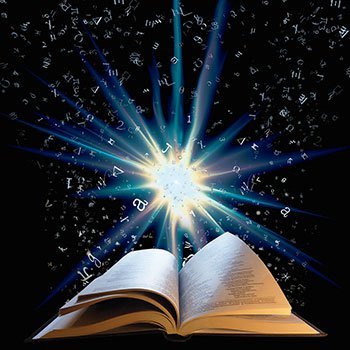 Need help memorizing scripture and want an easy and fast way to do it?
Need help memorizing scripture and want an easy and fast way to do it?
You’re in the right place.
On this page, you’ll learn how to memorize scripture quickly and make it stick for the long-term.
All by spending no more than 5 minutes per day.
Better:
You’ll learn to create a robust Memory Palace Network to do all the heavy lifting.
You’ll also learn how to create effective associations to use within your Memory Palaces. This “Magnetic Imagery” will pop any verse back into your mind almost instantly.
You’ll next learn how to follow-up for long-term recall and the bad memory habits you must avoid.
Are you ready?
Great – let’s go!
Why Memorize Scripture?
Before getting started with your strategy for memorizing scripture, it will be helpful to put some thought into why you’re doing it.
Here are some reasons:
Memorizing scripture creates an internal source of inspiration
By having scripture memorized, you will feel closer to your traditions
Memorizing even just one more verse can make you feel incredibly closer to your source
Deeply internalized knowledge can help heal spiritual wounds
Having scripture memorized potentially makes you a better contributor to your community
Experiencing even more benefits is guaranteed, such as an increased ability to interpret and explain scripture.
Please post any additional reason you can think of in the comment section below.
What To Do Before Memorizing A Single Verse
Once you know why you’re embarking on a scripture memorization journey, it’s important to plan.
Your plan should include:
A Memory Palace Network
Practice time
An arrangement of the material you plan to memorize on your first outing
If you’re missing any of these essential ingredients, you likely won’t experience the outcome you seek.
For finding practice time, follow my P.E.A.C.H. formula (practice encoding at calm hours):
The Memory Palace Network for Scripture and Verse Numbers
Think you can memorize a ton of scripture without a Memory Palace Network?
Many people do.
Others think it can be done with just one Memory Palace.
But without several in play, success is highly unlikely.
The truth is that your brain is going to be challenged.
The best way to manage that challenge is the Memory Palace technique.
How does the Memory Palace technique help with that?
Simple:
By reducing the cognitive load. It’s like having a canvas to paint on, instead of trying to paint on thin air. Do that and you risk having your colors splash on the ground in a mess.
What Is A Memory Palace?
A Memory Palace is a scientific tool used for transmitting any kind of information into long term memory as quickly and efficiently as possible.
Unfortunately, few teach this ancient mental tool in this way, which is sad. More people will get better results when someone just tells them the simple truth.
Here it is laid out in the form of a simple free memory course:
What To Do During Scripture Memorization
Once you know how to create a Memory Palace Network and have it in place, it’s time to learn how to associate words and phrases with locations.
The course covers everything in detail, but as a quick example, let’s use these wise words:
Proverbs 18:13 (NIV): “To answer before listening — that is folly and shame.”
How to memorize the book and chapter will be covered later. For now, let’s focus on the verse itself.
Focus on the words themselves
Personally, I’m a quick study. As a result, I usually I don’t spend a bunch of time on the meaning of a passage. That comes after I’ve memorized it.
However, you might benefit from understanding the meaning first, If that’s you, be sure to reflect before you start memorizing the exact words.
Next, sort out the keywords. In our example verse, they are:
Answer
Listening
Folly
Shame
If I may explain the process from example, here’s what I did next:
I asked myself…
Who do I know who relates most closely to either the form of the verse or its meaning.
My friend’s sister Andi comes to mind.
In a Memory Palace, it’s easy to see her typing out an email. Like this:

What kind of email?
An email in response to an episode of Faulty Towers she’s just seen on television. She does this before she even heard the end of the sentence that offended her, and as a result, feels ashamed.
Why Faulty Towers?
Because it has a sound similar to “folly” in it. Note that I thought of and chose Andi as my “Bridging Figure” for this verse because I was focusing on the first word “answer.”
The “an” in Andi and the “an” in answer “magnetically” attract each other. Weave these associations together in a Memory Palace and one will “trigger” the other.
By looking for natural parallels that are already in your memory and imagination, you can often come across just the right set of images. This happens much more quickly than if you try to create abstract associations.
Abstractions in your associations must be avoided as much as possible.
They’re difficult to recall, create weak associations and cause more frustration than they’re worth.
How To Memorize All Those Little Connecting Words
Now, I know what you’re thinking.
What about “to,” “before,” and “is”?
Before you spend time memorizing them, stop and think it through.
Do you really need to memorize them? Or can you allow your mind to fill in the blanks?
In my experience, most people do fine with letting their mind fill in the blanks, provided they follow the rest of the steps on this page.
But if you need to come up with associations for all these little words, I suggest you consider creating a “stockpile.”
If you use a tutu for “to,” always use that same association.
If you use a bee driving a forklift for “before,” always use that every time you need this word.
Don’t worry. It’s unlikely that your mind will mind the repetition. The Memory Palace will provide more than enough differentiation.
The important point is that you’re drawing upon information, ideas, people and objects already in your memory.
That’s where the real memory magic happens. And sadly, this is a point that is too often missed by many memory experts who otherwise mean well.
For Bible Memorizers Who Want To Remember Chapter and Verse
Now, you might be a person memorizing the Bible and wonder about memorizing book, chapter and verse.
In general, I suggest that you have one Memory Palace Network per book.
So if you’re working on the Proverbs, have a Memory Palace Network just for that purpose.
This way, you’ll never have to wonder what your MP Network is for – it will always be clear to you.
Next, you’ll want to develop skills with a simple technique for memorizing any number. It’s called the Major Method or the Major System.
For more help with memorizing numbers, you can also learn the 3 Most Powerful Memory Techniques For Memorizing Numbers.
Mnemonic Examples For Verse Numbers
Once you’ve understood this technique, it will be simple to create little associations to precede the associations you use for the verses themselves.
Have a look at this:
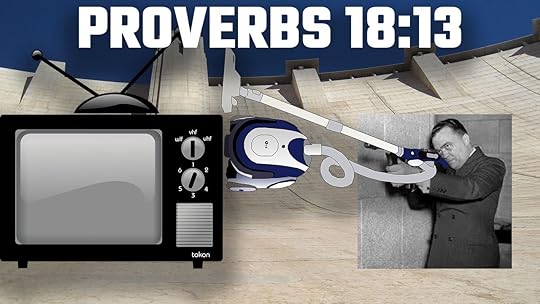
For Proverbs 18:13, for example, I see a large TV set that I actually owned vacuuming J Edgar Hoover using a Hoover vacuum.
Weird and memorizable, right? It is!
But why these images?
Because 18 for me is always represented by a few things, one of which is a TV set.
Not just any TV set, but a particular TV set that has meaning for me.
And when you know the Major Method, you’ll know that there’s a very good reason that it’s a TV and not some other object.
Likewise with J Edgar Hoover with a Hoover vacuum.
It represents 13 because I’m following this simple chart:

Sometimes for 13, I see Hoover vacuuming on the Hoover Dam. There’s actually a way to make that dam a Virtual Memory Palace that I’ll talk about in the future. For now, here are 5 Memory Palace Examples you can learn about to enhance your practice.
In any case, having multiple images to draw upon is the Magnetic Memory Method Principle of Compounding. It’s part of the joyful science of creating and using a “Magnetic 00-99 P.A.O.” Learn more in the MMM course on memorizing math, equations and all things related to numbers.
I know that this process might sound complex.
It really isn’t once you get into it. After all, as Jeannie Koh explains in her Magnetic Memory Method Testimonial, using these techniques helped her reach her goals immensely:

And it’s a skill worth having for more than just memorizing verse numbers. It makes committing all numbers fast, easy, effective and fun.
What matters most is that you associate everything with information that already exists in your mind and that is meaningful to you.
Following Up: What To Do After Your Memorize Scripture Verses
Now comes the fun part.
What you want to do is mentally walk through your Memory Palaces one at a time.
Do this as many times as it takes to recall the verses accurately. Be sure to recall them both verbally and in written form. There are a few more tips on this practice below.
How many times exactly is a question no one can answer. At least 5 times the first day and then 1 time per day for a few weeks is a good rule of thumb derived from Dominic O’Brien.
As you develop your skills, you’ll find that different verses enter your memory at different rates and each presents its own form of brain exercise.
The varying levels of challenge is a good thing. It keeps you on your toes, keeps things interesting, and in fact, you don’t want it to be easy. If using memory techniques suddenly became easy, they’d be boring and you would stop using them.
It’s very important to set a time aside for practicing recall to ensure that you do it.
I suggest using a Memory Journal to gather all your Memory Palaces and record your recall.
There’s no perfect journal, but one I recommend is called The Freedom Journal. It has just enough space for an effective Memory Palace drawing and lets you create 10-day “sprints” over the course of 100 days.
How To Recall One A Verse-By-Verse Basis
As you go, “trigger” off the associations you made and let them bring back the information.
For example, I would start with the specific Memory Palace and the specific station.
How does one remember that?
If you’ve correctly planned and organized your memorization activities, then the answer will be known to you without any stress or strain.
Remember:
You create the Memory Palace Network to serve the outcome you want. This process alone will help you remember what is memorized where.
If you’re properly numbered each Magnetic Station as taught in the free course, then you’ll have even more “autopilot familiarity” with your Memory Palaces.
How the Memory Palace Tells You The Right Word Order
And if you are memorizing verse numbers and memorizing the scriptures in verse order, order itself acts as a clue. It will tell you where in your Memory Palace the information is located.
Next, I would recall Andi and simply ask myself: “What was she associated with?”
Asking questions during recall is important because you’re encouraging your memory to do a bit of work.
Sometimes the entire line will blast back at you, almost like magic. Especially if you complete these powerful visualization exercises.
Other times, you’ll have to piece it together, word for word.
In all cases, if you have a pen or pencil in hand, recall the verse first, then write it down. Say the line out loud as well.
At more advanced levels, you can certainly remove the writing part, but I don’t recommend it. Even when I’m memorizing names of people I’ve met, I almost always write them out in my Memory Journal.
This simple, 1-2 minute practice ensure that I receive the full benefits for my memory and successful recall.
The Big 5 of Learning For Long Term Memory
In full, these are:
Reading
Writing
Speaking
Listening…
…from and into Memory
Visualized, the levels of processing effect for memory looks like this:

I’ve just mentioned writing out what you’ve memorized and speaking it out loud.
Writing automatically leads to reading, and you’ve already ready read the verses before, during and after memorizing them.
However, it’s good to also read interpretations by multiple thinkers where possible.
Plus, there are often more comprehensive commentaries available that you can read on various scriptures that will give your mind more context to help create deeper connections in both your imagination and the physical structures of your brain.
A Solo Way To Hear Memorized Verses Out Loud
It’s also important to also hear the verses spoken by others, so try to find recordings that you can listen to and recite along with them.
You can also record yourself and listen back to your own voice.
I also suggest making memorization a family or at least a community occasion.
Reciting with others and hearing others share what certain passages mean for them is very useful for creating long term memory impact.
The Biggest Levers You Need For Memorizing Any Scripture
In brief, you’ve got to commit to creating the time for scripture memorization.
Logical, isn’t it? If you really want to get something done, you’ll make the time.
How much time do you need?
No one can honestly say just how long it will take for you to reach your goals.
However, once you’ve started, chances are that this question will no longer be very interesting to you.
You’ll be enjoying the process so much and become completely satisfied that each new verse gets you closer to the goal. The journey will become so much more important than the destination.
And when those destinations are reached, you’ll be excited and want to create new ones. The benefits for the sharpness of your mind will be very clear to you.
Common Questions And Answers About Memorizing Scripture Quickly
Does The Length Matter?
Yes and no.
I recommend starting with short verses in the beginning. The sooner you develop the skills needed to quickly and accurately memorize short verses, the sooner you’ll be able to tackle longer verses.
The trick is in seeing that longer verses are usually just shorter verses fit together. In such cases, it can be very helpful to spend more time ensuring that you understand the gist of a long verse before committing it to memory.
Should you use flash cards and sticky notes?
No, I don’t recommend this because it doesn’t create the needed skills of memorization that a Memory Palace and association develops.
These forms don’t create brain exercise either. The only exception to the rule is if you are memorizing individual words or terms and don’t have the answer on the back of the card.
Instead, feature the Magnetic Imagery you created on the opposite side of the flash card or sticky note. In this way, you’ll ask your brain to do a bit of memory work and jog itself into action. The benefits of doing this will be incredibly rewarding.
And as soon as you can, leave the index cards and sticky notes behind.
Why Memorizing From Online Scripture Sources Is A No-No
Many people want to memorize from online sources such as the Scripture Typer app and Bible Memory Kids.
To be honest, these Bible apps look great. They’re clean, well-organized and perhaps even fun to use.
But they’re also creating Digital Amnesia.
If you must source your scripture from a screen, at least write it out in your handwriting and memorize from that. This practice will deepen the importance of the verse to your mind and is a win-win from the get-go.
What Scripture Do You Want To Memorize?
At the risk of being repetitive, knowing why you want to memorize scripture does matter.
For myself, I like to memorize the odd line from the Bible. But overall I prefer scripture from the non-dual tradition, Advaita Vedanta.
In this memory demonstration, you’ll see me recite 32 verses from a text called the Ribhu Gita:
Although I didn’t memorize a verse every single day, I rarely spent more than 5 minutes on any single verse. It just isn’t necessary when you have these skills.
Ultimately, what really matters is that you learn the skills and ground the project on a solid reason reason why you want to commit the scripture to memory.
And remember:
Long-term memorization is a marathon, not a sprint.
Plan, show up consistently, and enjoy the multiple benefits as they increase, one verse at a time.
The post How to Memorize Scripture And Verse Numbers In 5 Minutes Or Less appeared first on Magnetic Memory Method - How to Memorize With A Memory Palace.
March 20, 2019
Aphantasia Cure: How Alec Figueroa Helps Clear The Self-Diagnosis Confusion
 If you’ve been looking for an aphantasia cure, you’re in luck.
If you’ve been looking for an aphantasia cure, you’re in luck.
Here’s why:
Alec Figueroa of AphantasiaMeow has the best aphantasia test and the most likely paths you might need to find a lasting solution.
Not Sure If You Need The Aphantasia Cure?
Try this quick test:
Imagine you are on a beach at sunset.
Can you hear the waves crashing against the shore?
Do you feel a gentle breeze against your skin and the sand between your toes?
Can you taste the faint saltiness of the ocean? Can you picture the fiery hues as the sun meets the water on the horizon?
Red, orange, yellow, purple, and blue. Beautiful, isn’t it? Peaceful. Serene.
More questions…
When you close your eyes and picture this scene is it vivid?
Is it an experience as if you are really there? Can your sensory memory pick out a variety of sensations?
Or is your experience lost in fog… dull, distorted, and distant?
Or… is there nothing, only blackness?
If you see nothing in your mind…
Listen To Someone Who Cares About Curing Aphantasia
On today’s Magnetic Memory Method podcast I speak with imagination and aphantasia expert, Alec Figueroa.
Also known as “AphantasiaMeow,” Alec has been helping many people remove aphantasia from their lives.
We discuss his work with those who struggle with the idea that they do not have a “mind’s eye.”
And those who may not have been able to picture that beautiful beach at sunset have experienced tremendous relief.
Although this phenomenon was first introduced in 1880, it wasn’t until the mid-2000s that the idea of mental blindness began to be explored.
With studies still in the early stages as compared to other mental health fields Alec is on the forefront of bettering the lives of those whose imaginations are not as vivid as they would like.
Why People Seek Help When They Can’t Visualize
You may be skeptical of this idea of aphantasia, finding it hard to believe that someone couldn’t close their eyes and picture a juicy red apple, a shiny new bicycle, or freshly fallen snow on command.
But I feel empathy, because I don’t really see pictures in my mind either. And if curiosity is driving you, read on and click play on the episode to hear Alec’s approach to removing the problem.
You may have come here searching for answers because (depending on the source) you are the 4-5% of the population, or the 1 in 50, who is affected by aphantasia.
You may have heard of Alec’s work and wondered “Can he help me?” or, better still, “Can he help me help myself?”
Whatever the case, you are here now. And there really does seem like Alec’s aphantasia cure will help you.
And it seems to me that part of the reason Alec’s approach works is because many people seek help due to FOMO (fear of missing out).
That means they might be forgetting to focus on the glorious experiences they do have (such as we’ve seen from Penn Jillette).
But if you’re on this page, you’re either on a self-help journey for yourself, a loved one, or simply seeking to expand your knowledge on cutting edge brain health discoveries.
Interview Highlights
By listening to this interview today, you’ve taken the first step and congratulations are in order…we’ll be imagining ourselves sipping memory friendly drinks from coconuts sooner than you think!
All you need to do is press play and you will discover:
How to define the concepts of aphantasic, hyperphantasic, and prophantasic
Aphantasia versus a disorder (you don’t have to feel at a disadvantage to others)
The confusion surrounding aphantasic self-diagnosis techniques
Why a visual imagination may not be present
How to develop the mind’s eye through mental exercise
Image streaming as aphantasia therapy
“Imagery” as a multisensory concept
Parallels between meditation and mind’s eye development
How to overcome mental blocks and learned helplessness to improve mental imagery through some powerful visualization exercises
In sum, there are many brain training exercises out there. But if you have aphantasia, what Alec offers is most likely the best. Follow up with him and let him help you!
Further Resources on the Web, This Podcast, and the MMM Blog:
Aphantasia Meow (Alec’s official website, including his VIVIQ (Vividness of Visual Imagery Questionnaire)
Scientific American – “When the Mind’s Eye is Blind
Aphantasia: Experiences, Perceptions, and Insights
Aphantasia: Develop Your Memory Even if You Cannot See Mental Images
The post Aphantasia Cure: How Alec Figueroa Helps Clear The Self-Diagnosis Confusion appeared first on Magnetic Memory Method - How to Memorize With A Memory Palace.
March 7, 2019
5 Sensory Memory Exercises For Better Memory Palace Success
 As someone who is not very visual, I’m so glad I learned how to use sensory memory to help me use memory techniques better.
As someone who is not very visual, I’m so glad I learned how to use sensory memory to help me use memory techniques better.
But at first, it was really hard coming to grips with the fact that I don’t really see pictures in my mind.
After all, how is a “Memory Palace” supposed to work if you can’t “see” images in your imagination?
Well, whether you’re low on the visual scale, like me, or have full-blown aphantasia, I’ve got 5 simple memory tricks.
Each involve a different kind of sensory memory you can combine with your Memory Palace Network.
These tricks will help you create and use Memory Palaces and your own mnemonic examples (a.k.a. Magnetic Imagery) quickly.
And more importantly than learning to create a Memory Palace Network and mental imagery quickly, you’ll use sensory memory to make the information stick in your mind. It’s actually very easy.
But here’s a quick warning before we get started:
There’s going to be some people who will still insist that they can’t do any of these exercises.
If that’s you, keep reading until you reach the final tip. Few, if any, will find an excuse for the final tip I’ll share.
The Strange History Of My (Non-Visual) Sensory Memory Blessings
It’s true. I don’t really see pictures in my mind.
Although it’s not true that I see nothing at all, if anything, I find what I do see almost useless, if not distracting.
When I tell my memory athlete friends this fact, they either:
Know exactly what I mean
Use some of the same processes I’m about to share
Sometimes are purely “visual” in some sense I have yet to understand…
I say “some sense,” because even with our current technology, it’s not possible to peer into anyone else’s imagination.
Anyhow, if you know the Magnetic Memory Method Podcast, you may have heard some of these conversations before.
If not, I recommend you listen to some of them – I’ve learned a ton that have improved my practice and even re-listening to some of them will help your practice too.
Here are some of my favorite episodes that touch upon sensory memory:
Nelson Dellis on visual memory techniques
Alex Mullen on building speed with mnemonics
Mark Channon on memory and acting (very multisensory)
Tansel Ali on gratitude in memory improvement
John Graham on using memory training obstacles
Idriz Zogaj on memory training apps
Of course, you need to listen to these episodes with yourself in mind.
Why?
Because at the end of the day, it doesn’t really matter what others do in their minds. Each of us experiences only one mind – the mind we’ve been blessed with.
And what a blessing indeed! (Unless you decide not to make it the most incredible experience it can be.)
But I understand that some people currently have miserable experiences, and not being able to use memory techniques must be very miserable indeed.
So, if you can’t see images in your mind, here’s the first memory trick that will help you find more Memory Palaces and use them:

#1: The Auditory Sensory Memory Palace Trick
Think about a familiar place.
Take your school, for example.
When I think purely about sound, I hear the voice of Mr. Andrews:
“Render therefore unto Caesar the things which are Caesar’s, and unto God the things that are God’s”.
He used to say this every time we were supposed to hand in our homework.
I have an idea of what the classroom looked like, and since he was a big fellow, I have a general sense of his physical presence. But it’s his voice that really stands out.
Likewise, I think of my various band teachers and can even place where different sections of the orchestra were in the different rooms without needed to render a visual picture.
Zero Visualization Needed
There is a way to turn this into a picture that requires zero visualization, but we’ll get to that soon.
For now, is this a cool memory trick or what?
The more you focus just on sounds, the more you’ll explore powerful dimensions of your memory.
This auditory focus will make a huge difference – especially in connection with the video I’ve created for you on mining your autobiographical memory for more Memory Palaces. (Coming soon. Make sure you’re subscribed to this blog and complete these episodic memory exercises in the meantime)
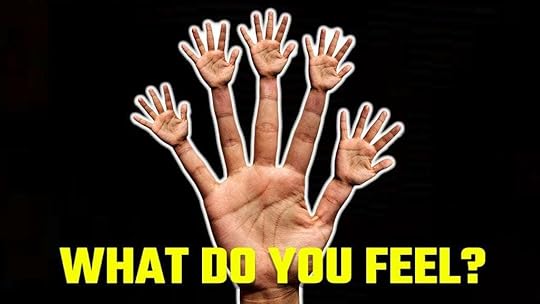
#2: The “What do you feel?” Exercise
Let’s go for something soft with this exercise.
When I completed this exercise, I thought of my Cheshire cat.
I’ve had two in my life – once from when I visited Disneyland around age 10 and one my mom sent me just a few years ago to fill in the gap.
I had to get rid of the old one during one of my epic moves around the globe. Thanks, mom!
In terms of the Memory Palace this brings to mind, it’s not Disneyland, though I have used parts of the park as a Memory Palace.
Rather, in this case, I think of the plane ride home.
Now, you might think that an airplane is not great Memory Palace material.
Au contraire, and we’ll talk about using them one day soon. Make sure you’re subscribed for when the day comes.
A Smiling Sensory Memory Example
Anyhow, I have this vague memory of being a 10 year old hugging the Cheshire cat. He joins me here:
To make this brain exercise work, I really dig into what that felt like in my memory. Then I dig further.
And there are indeed other physical sensations related to flying that come to mind.
Try accessing these different levels of sensation-based memory for yourself:
The softness (or hardness) of the seat beneath you
The temperature of the glass when you touch the window
The feeling of anticipation as the plane accelerates down the runway
Suddenly, all kinds of sensations emerge when you complete this simple memory exercise.
Now It’s Your Turn
Think about flights you’ve taken. (Or train trips, road trips, etc.)
When I completed this exercise, all kinds of flights I’d forgotten emerge.
Write the ideas that come up into a Memory Journal and include all the sensations you can think of.
Think of it as a kind of personal, private sensory memory test.
Bang presto!
When I completed this exercise, I found myself with oodles of airplane and airport Memory Palaces to work with along with a wide variety of sensations.
Memory exercises like these are the closest thing to real magic that exists, don’t you think? Especially when used in the context of these additional recovered memory exercises.
Give them all a try!

#3: The Concepts Are King Exercise
In a nutshell, this exercise helps you explore what you think and remember conceptually.
Now, this one is a bit of a stretch, I’ll admit. But stretching is good.
Start with one of the most basic concepts: Truth.
What comes to mind when you think of the truth?
I think of libraries.
And when I think of libraries, a ton of them come to mind. In fact, I’ve worked in three of them, and studied in dozens more. Each make great Memory Palaces.
Next, think of a concept like justice.
It’s true:
During high school I once wound up in the drunk tank. It sucked back then, but makes for an interesting Memory Palace now.
I took law in high school and observed a few court cases too. I had a friend who was a lawyer before he went to the great Memory Palace in the sky and he comes to mind too – all from thinking about the concept of justice.
The concepts of math, chemistry, weather all bring multiple associations – and not a single one of them can be seen visually, strictly speaking.
They’re just concepts.
And thinking about Einstein for math, Breaking Bad for chemistry and a meteorologist I know named Dave don’t require me to make mental images either.
Remember: lowering the cognitive load always helps you learn faster and remember more.

Anthony Metivier during a rare cheat in a Beijing dumpling restaurant
#4: The Delicious Aroma Exercise
I’ll bet at least one person in your family has some kind of secret recipe.
And even if it isn’t secret, there’s a dish they make really well that you adore. Maybe even something based around foods that improve memory.
Now, although I can’t eat a large number of things I used to love, my mom’s zucchini bread comes to mind.
My dad also makes a mean spaghetti. And since we moved around a lot, quite a few kitchens come to mind for use as Memory Palaces.
Then I think of a few romantic meals I’ve had over the years. These took place in buildings ranging from the CN Tower in Toronto to the Pizzeria Monte Carlo in Rome.
Even as someone who isn’t a foodie, there are oodles of tastes and aromas that come to mind all over the world.
Fruit juices and dates in Cairo, Lingonberry jam in Sweden, dumplings in Beijing… all wonderful Memory Palaces just waiting to be unlocked from memory.
I’ll bet you have dozens of options.

An “Un-visualized” Berlin Memory Palace
#5. The “Un-Visualization” Memory Palace Exercise
What? How can you “un-visualize” something?
Let me answer that question for you:
Unless you’re dead-set against it, lazy or uninterested in the most miraculous memory tool in the universe, the answer is yes.
All you have to do is draw your Memory Palaces.
Instead of trying to juggle space in your mind, make it simple.
Rather than trying to imagine the rooms and hallways and garages and driveways and all kinds of things that you might not be able to see clearly in your min, break it down into simple squares.
On paper.
When I first encountered memory techniques and the Memory Palace, I couldn’t fathom how on earth I was supposed to see myself moving through a building I wasn’t in.
And that’s a very good thing, because the strange explanations I was reading prompted me to solve this issue for myself. I got my head out of the books written by memory competitors and I went deep into the history of these techniques.
And reading between the lines of texts like the Rhetorica ad Herrenium, I discovered that they weren’t really talking about visualizing their Memory Palaces.
And the notion of making them tactile and strategizing them before using them gave me the idea to make them tactile in the simplest and easiest way you can:
With pencil and paper.
And as soon as I got results from doing this, I couldn’t stop exploring!
I am still amazed by just how many buildings I can visit in my mind. Making them visual simply by drawing squares on paper makes memory training so much easier.
No More Excuses Along Your Memory Training Journey
Let’s face it:
People with no hands can draw Memory Palaces with their teeth, their feet or even ask for others to help.
I know this for a fact because I’ve had correspondence from people who can’t move anything but their mouths.
Yet, each have created and used Memory Palaces by drawing them nonetheless.
In sum:
There really are no excuses.
Of course, if you don’t want to join the great memory tradition, no problem. I don’t want to learn how to pack a parachute and jump out of a plane. Some things just aren’t for everyone.
But if you do and you’ve ever struggled with the visual element, here’s a bold promise:
You really can rest assured that you can use memory techniques and they will work for you even without seeing pictures in your mind.
Here’s the best way I can show you how:
In fact, due to an interesting turn of events, I wound up competing once at a competition with memory athlete and memory expert Dave Farrow.
Based on that experience, I can tell you that there’s really no time to create pictures in your mind when the cameras are rolling and the clock is on.
The mnemonics I created in that short competition were almost purely conceptual and I was pleasantly surprised by just how well I did…
Especially as someone completely unprepared and with zero competition practice, history or particular interest in throwing down the gloves.
So even if you are hyper-visual, you’ll want to consider the advantages of adding these other senses to your memory practice.
What do you say?
Can you imagine yourself moving from a purely visual approach to using memory techniques to a multi-sensory approach?
I promise you’ll enjoy better results from memory techniques as a result. And if you need more, here are 5 Memory Palace Examples to improve your memory training practice.
The post 5 Sensory Memory Exercises For Better Memory Palace Success appeared first on Magnetic Memory Method - How to Memorize With A Memory Palace.
February 21, 2019
21 Study Tips [Fast And Easy Ways To Learn Faster]
 Are there any study tips that I’d kill to know if I were going back to school?
Are there any study tips that I’d kill to know if I were going back to school?
I get this question all the time.
And although I wouldn’t kill for anything, a few suggestions do come to mind…
Fewer pints of Guinness, for one thing (and I’ll explain exactly why).
More time in the library.
Perhaps even committing to another area of study altogether.
(Even if that might have lead to an entirely different career path.)
So with some reflection on the years since I’ve earned my B.A., two M.A.s, and a Ph.D., I’ve assembled 21 study tips for you.
Let’s jump in.
#1. Learn Memory Techniques Earlier
This is, without a doubt, my no. 1 criticism of my own learning career.
(Yes, even more than all those blurry post-study session happy hours!)
I wish I would have started learning memory techniques sooner.
Cruising altitude
We are all familiar with the expression “cruising altitude,” right?
Generally this is the point in the flight where the “seat-belt light” is turned off, you’re free to move about the cabin, and everything is smooth sailing.
What if I told you this cruising altitude was attainable…faster? All it takes is getting started. Seems like a no-brainer, doesn’t it?
If you commit to learning memory techniques sooner you’ll develop this intuition – knowing what to do, how to do it, and when.
The true roots of inspiration
Growing up, we all had that mother figure that just knew what we needed.
The decision to learn memory techniques will serve you and reward you tenfold.
You’ll be able to:
Adopt them on the fly because you’re always prepared.
Learn more, and more precisely because information will have a place to be stored.
Avoid decision anxiety because you will know which memory techniques work for you.
As Brian Tracy once said, “The hardest part of any important task is getting started on it in the first place. Once you actually begin work on a valuable task, you seem to be naturally motivated to continue.”
Start there, and I promise, you won’t regret it.
#2. Keep a Memory Journal
What do you do to remember those important points from a professor’s lecture?
Surely you don’t just sit in the classroom and hope you remember what was discussed that day come finals week. You take notes don’t you? Of course you do!
Well, why aren’t you taking notes in all areas of your life? Valuable information can slip away too easily if it’s not recorded. It’s such a simple fix, taking minimal time to physically write things down.
To learn faster, to really learn the information you need to know, you must sort through the “junk.”
The ultimate “decision tree”
This means deciding:
What must be captured in your memory
What you can legitimately reduce
What will relieve cognitive load
What you can let go of completely
In other words, prioritize.
I’ve found using The Freedom Journal as my Memory Journal works great for helping me discover and determine the big levers I need to be focusing on.
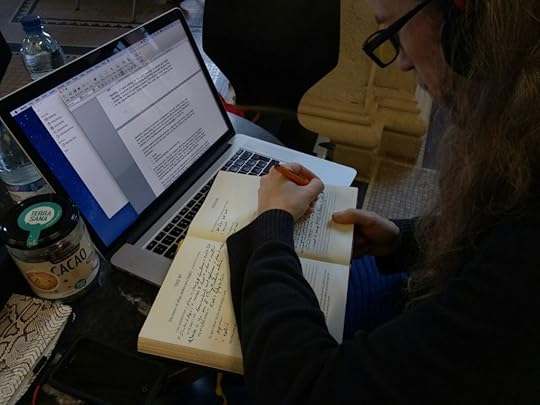
Anthony Metivier using the Freedom Journal
If you put in the work of creating and maintaining a Memory Journal, here’s the beset part:
Flipping back through the pages will show you not only how far you’ve come, but where you can make improvements.
#3. Double Down on Memory Palaces
Excuse the casino speak, but I would undoubtedly double down on the number of memory palaces I created.
Let me be clear, I made a ton, but when I think about the benefits of memory palaces I know I should have created a lot more. By creating memory palaces you’ll unlock your:
Spatial memory
Autobiographical memory
Episodic memory
Procedural memory
Figural memory
Semantic memory
I know creating Memory Palaces may be overwhelming. I know you may not know where to start, but this is something that you just need to dive in and try.
My free course will guide you, step-by-step, in this creation process:
#4. Complete a 00-99 P.A.O. sooner
This is another one of those special memory techniques that my best advice is to just dive in and get it done.
Think about what a sizzling fast memory would be like, learning as fast as you want to.
That guiding vision, that inspiration, is possible when you have a P.A.O. (Person Action Object System) in place.
If you want guidance in creating one, check out How to Memorize Math, Numbers, Simple Arithmetic & Equations.
In brief:
Start with the Memory Palace.
Learn the Major Method.
Then use the Memory Palace and the Major together to complete your PAO.
Simply put:
If numbers are involved in how you need to study fast, this number-memorization skill is essential.
Avoid perfectionism
Your first P.A.O. doesn’t have to be perfect the first time. Mine wasn’t.
In fact, I still make changes to mine. It is in a constant state of flow, of refinement.
One step at a time forward…sometimes sideways to tweak your P.A.O. You’re always moving towards your goal if you try to be. As long as you’re putting forth the effort you will always be progressing.
#5. Read even more memory improvement books
Understand this:
The more you know, the more you can know.
The more you expose yourself to literature, you will get the benefit of the primacy effect, the recency effect, and serial positioning effect.

Anthony Metivier with a Chinese translation of a Tony Buzan book
Continually returning to a wealth of information, that repetition makes a huge difference in learning.
There is almost an infinite amount of memory literature on the market these days (including some great information from not-so-great teachers).
Patience is the key
My advice:
Cast a wide net
Use discernment to find what’s good for you
Be open to a variety of writing and teaching styles
Always continue to invest in your education
You will read more critically to retain information, and develop patience by reading a wide variety of literature from the memory tradition.
In short, read as much as you can.
#6. Teach memory techniques sooner
This goes for any profession. The more you want to learn something, the sooner you need to teach it.
Why?
You’ll learn what you seek to teach better because you’ll see where your understanding is lacking.
Plus, you’ll see where your ability to effectively enunciate and describe the information is lacking.
The science of feedback loops in learning
Then, you’ll figure out how to improve in real time as you receive feedback.
There’s even a name for this, the protégé effect.
The most important science in the article is this:
“Researchers have found that students enlisted to tutor others work harder to understand the material, recall it more accurately, and apply it more effectively…[These students] score higher on test than pupils learning for their own sake.
[Studies have shown] that first-born children are more intelligent than their later-born brothers and sisters…contributing their higher IQs result from the time they spend showing their younger siblings the ropes.”
The Roman philosopher Seneca said:
“While we teach, we learn.”
Now that this ancient wisdom has been proven by science, why not apply it in your own learning journey?
#7. Keep up card memorization practice
I took a break from my card memorization practice too soon in my educational career, and I know I would have learned much, much sooner incorporating this as a daily practice.
I found many, many benefits to card practice once I returned to routine practice. You will learn to:
Deal with multiple levels of information at the same time.
Deal with information that is repetitive and similar, yet still distinguish it.
Deal with long sequences of information along well-crafted Memory Palace journeys
#8. Language learning
From complicated formulas and symbols, to mathematical equations everything is language based.
The sooner you learn how to memorize words and phrases, the better you will build your skills for learning any information because any information you encode into memory palaces will be in words and phrases.
Languages = connections
Learning language gives you more sounds to work with. A greater range of sounds gives you the ability to work with abstract and concrete examples more easily. You mental dexterity will increase as well.
But this goes beyond you…
Just as teaching others accelerates your learning, learning a language and being in contact with more people sooner is a powerful tool to increase your learning speed.
Take advantage of those connections you build with others, because people are one of your greatest assets with memory work.
#9. Read WAY more history
Whenever you are using memory techniques you are using information that already exists in your head.
Put it this way:
The more information that you have already in your head, the more you’re able to use it in your memory encoding, using mnemonics.
Makes sense, right?
The more that those are real, substantial people, then the more real and prominent they’re going to be in your mind.
Even better:
This knowledge will be more accessible. Raw accessibility will reduce the cognitive load on your mind because you’re working from the real instead of wrangling with the imaginary.
Off the deep end with history
Reading history gives you a greater pool to draw from in your Magnetic Imagery. This, in turn, increases your ability to learn faster.
No matter the subject – choose something that interests you – and get your nose in a book about it.
Heck, I even read while walking just to make good use of the time:

Walking and reading in Denmark
I know it may seem counter-intuitive to add another “to-do” to your list, but think of the long-game.
There may even be unusual ways to complete note taking on the fly too. (Not to mention creating and using impromptu Memory Palaces)
All these steps are beneficial to your overall brain health, not just accelerated learning (though it is something to desire).
#10. Do more leadership/community work
Leadership is a huge skill. You can read people better, seeing their strengths and where they need support better.
Developing your qualities as a great leader and expert in your field, partnered with the idea of teaching, with help you learn more, more quickly.
Everything leads back to the Primacy and Recency effect.
The more you are continually coming across the topic, the deeper it will get into your memory.
Learn the natural way
This truly makes learning natural.
Plus, in-depth conversations will occur in these group settings. You will be effortlessly immersed in your topic so that you are continuously learning without even realizing it.
Easy peasy, no?

Helping some local entrepreneurs use Thinkific in Brisbane
#11. Apply for more scholarships
Though I received some great scholarships, doubling down on the amount I applied for is another thing I would do, without questioning, if returning to university.
I would do whatever it took to apply for more, and there’s a number of reasons why:
Alleviating money worries frees you to “worry” about the future.
Concentrating on your education instead of whether you can afford rent and tuition creates a more powerful resume.
You’ll improve your application skills.
Not only will practice create a better application essay, but your collection of reference letters will grow. You’ll extol your own great qualities more eloquently, but so will others.
It’s amazing what a little positive mental attitude and encouragement from others can do to transform your life.
#12. Invest in more training
There is so much more you can learn by supplementing the core subjects you’re learning.
You can learn so much more by applying what you’re learning in other areas.
You can also learn more about areas you’re already expert in. That’s why I attended a ThinkBuzan memory training, after all.

Anthony Metivier with Tony Buzan
Whether its CPR certification, martial arts training (those were just a few of my “should haves” when I think about things I should have learned sooner), a combination of short-term certifications and long-term training can be beneficial to developing learning skills.
They don’t have to be related to what you are studying per se, but will be beneficial if they were.
For example, I know I would dive into memory training a lot sooner had I realized the impact it would make on my life in the future.
Whatever you’re learning, find ways to apply it to other disciplines for maximum return.
#13. Get a writing mentor
Look:
Your goal here is not to become the next William Shakespeare, Charles Dickens, or Jane Austen (though I’m sure none of us would mind the accolades). It’s simply to improve your writing skills.
The best way to do that is by having a writing mentor.

Jon Morrow of SmartBlogger.com and Unstoppable.me
My main writing mentor for this blog is Jon Morrow. If you compare his life lessons post to my life mistakes post, you’ll see why he’s considered the King of Blogging.
Free writing mentors are everywhere
But if you can’t afford a mentor, here are some suggestions:
Have a graduate English student look at your writing
Join a writing club
Find online people for whom writing is more than just their passion, but also the kind of career you want to experience
This focus will help you find people who genuinely care for the end product. Their suggestions can lead to greater ways of packaging ideas, and better mental organization, and, in turn, greater powers of expression.
You can improve the world with your words and should strive to do so in every sentence.
#14. Hire a proofreader/editor
To further improve your writing skills, not only is a mentor a great asset, but a proofreader or editor as well.
This doesn’t necessarily mean hiring, or exchanging money for their services.
This can also be a great chance to peer mentor with others.
Exchange writing, give each other feedback on clarity, grammar, sentence, structure, etc.
I did this a lot in university – just not nearly enough.
Hiring is worth it
And if I were to do it again, I’d just hire someone for help.
After all, writing my dissertation twice… really sucked.
The question is… why is this a study tip?
If you have an editor of any kind work with your writing, you’ll save time – time that can be applied to more studying.
You’ll study what your writing looks like after it has been improved.
Both of these outcomes are incredible.
#15. Write non-fiction sooner
While I wrote a lot of fiction while in university, I didn’t write nearly enough non-fiction.
If you are already honing your writing skills with the help of a writing mentor and proofing/editing, the writing process itself can be beneficial to accelerate your learning.
With nonfiction you are putting in the work of research, through reading, and, many times, interviews – conversations about your topic, as discussed above, create an atmosphere of immersive study.
Again, this sounds a bit off topic when it comes to study advice, but it really isn’t. Practicing different kinds of writing directly amounts to studying those kinds of writing.
#16. Research more before following medical advice
This is something that may be hard to hear, but sometimes doctors are wrong.
It’s the brutal truth, though.
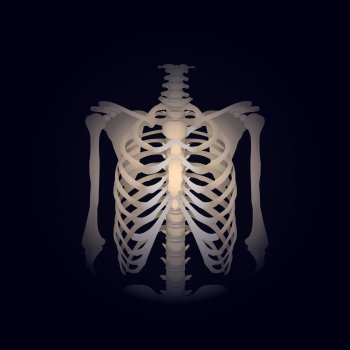
And if you’ve ever sought out a second opinion when you felt a diagnosis or treatment option was incorrect, you know it.
In fact, in Principles, Ray Dalio shares a frightening story about how he avoided a completely unnecessary removal of his throat by getting multiple medical opinions.
Oftentimes, as a college student you may not feel like you have the means or the time to seek out that second opinion.
Advocate for your own health
Think of it this way:
What could be more important than advocating for your own health?
I’ve shared my Bipolar memory adventures before, and still think I would have been better off getting a second opinion. I just didn’t know that I could or even should have sought it out.
Double check the advice you are given against medical and scientific literature.
Do your due diligence
Doing your own due diligence before following the advice of a medical professional can save you time, stress, and money, leaving you free to concentrate on your education.
This is another example of an obstacle that can be prevented easily, with care on your part.
It’s also another area that will give you practice in the kinds of study tips that can save your life.
#17. Move to another country sooner
Moving to another country, for even a short period of time (studying abroad for a semester, for example) is a great tool to help you learn faster.
There are numerous benefits, including:
Learning another language
Exposure to many different people, giving you the opportunity to learn multiple topics through experience with them
Unlocking parts of your brain
Inspiration for building more Memory Palaces
Your numeracy skills will improve by dealing with different currencies and banking systems
Avoid the “some day” trap
Many people toy with the idea of starting a new life by reinventing themselves in a foreign country.
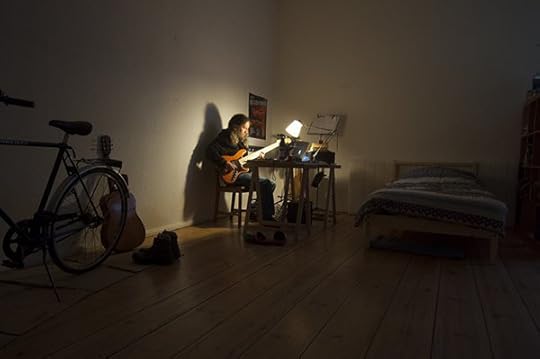
My favorite Berlin Memory Palace
But they see this as a “someday” dream.
Don’t do that. If you think of the practical reasons and benefits to a “big move” you’ll just start packing.
And the research you do along the way will build your study skills and give you the adventure of a lifetime.
(I saw this as a person who has lived in 4 countries and visited over 30).
#18. Be clearer about my purpose sooner.
Having a big vision to pull you through mundane tasks is the key.
Get clear about your goals and what you seek to achieve, and you will have the motivation to “power through” all the steps we’ve discussed.
If you know what you want to do, if you have clarity in purpose, you will put forth the effort to make your vision a reality.
#19. Diet, sleep, fitness, relationships
University is the time when many young people are “on their own” for the first time.
Students are figuring out their newfound freedom, and oftentimes this is an experiment in self-control.
Mental garbage is a barrier to learning faster, and is a result of not eating well, sleeping well, and engaging in, sometimes, toxic relationships.
Everything consumes
Understand this critical point:
Your brain is an energy consumption device. It’s consuming energy.
A great relationship can fuel it with energy.
A bad relationship can rob it of energy.
Remedy this by setting simple goals about the kinds of relationships you want.
The big picture
Remember that “big picture” vision we just talked about? From friendships to romance, and stick to this vision. Your energy will flow properly, and not hinder your ability to learn.
Otherwise, your study time will be chewed up on searching for a new or replacement mate. And that can seriously mess with your focus.
#20. Meditation for Better Memory
I had many, many opportunities to meditate, but I didn’t start my practice soon enough.
I would have began my practice earlier had I realized one important, yet simple fact:
There are multiple kinds of meditation.

Walking meditation works too!
For years, I imagined it as purely mental, or sitting just to sit.
But meditation is much more than a mental activity.
No matter the form, they all help with mental organization, concentration and focus.
Focus is a fact
Obviously, the better you are able to focus on information. The better you can focus on the things that matter in life, you do not get caught up in all the little things that don’t.
Explore the different types to find what works best for you, be it mindfulness meditation, transcendental meditation, or guided meditation, among others. Experiment to find out what works best for you.
#21. Cut out the booze
Yes, you read that correctly, and, no, it’s not a typo.
Alcohol is a brain killer.
I’m not going to preach about it any further than sharing my story.
I drank like a fish in university and it was almost certainly the true cause of my many depressions.
These horrible mental states interrupted my ability to focus, concentrate and remember.
Sure, memory techniques helped me get through. In fact, I used to flaunt the fact that I could remember names and do memory-related magic stunts while completely inebriated. All that sounds foolish to me now given the price I’ve paid.
How to avoid mental and physical misery as a student
If I had only been smart enough to eliminate alcohol in my life a decade sooner, I would have saved myself a ton of mental agony and physical pain.
All that misery?
It caused serious personal conflicts too, which on top of everything else, interrupted by ability to learn as quickly and thoroughly as I wanted.
If I had a time machine, I’d slap myself silly for inviting so much chaos into my life!
Short And Sweet Final Thoughts
Does any of this make sense to you?
If so, here’s how to get started:
Begin by incorporating one or two of these techniques into your routine. Then gradually expand.
You will find that with each new addition or removal I’ve suggested on this page that your learning, over time, has accelerated.
You will remember more, much faster. So much so that you’ll be able to enjoy much more of life, all guilt-free, all as a reward for a job well done.
The post 21 Study Tips [Fast And Easy Ways To Learn Faster] appeared first on Magnetic Memory Method - How to Memorize With A Memory Palace.
February 14, 2019
3 Memory Palace Training Exercises [Beginner-Intermediate-Advanced]
 Are you searching for Memory Palace training exercises and an easy way to build your first (or second) Memory Palace Network?
Are you searching for Memory Palace training exercises and an easy way to build your first (or second) Memory Palace Network?
And do you find yourself frustrated by:
Memory training apps that fail to deliver?
Endless how-to posts on the Internet that “guarantee” results?
Memory improvement books that leave you entertained but you still find yourself no closer to using the tools that will help you build your memory?
I know it can seem like an endless loop of information when it comes to memory training on the Internet.
It’s almost as if you’re on a hamster wheel, getting no closer to your destination. You may feel discouraged, or worse, ready to give up…
But before you throw your hands up in the air and admit defeat, know this:
The problem isn’t you.
The problem is the “quick fix” methods full of empty promises.
And here’s the very good news:.
I have developed three simple Memory Palace training exercises.
And I know these exercises will help you to build an effective Memory Palace network. (Scroll down for proof.)
No, the exercises on this page are not a quick fix, hack, or shortcut.
But what you’re about to discover is a simple and proven method that will help you create and implement Memory Palaces so you can:
Learn the language you always wanted
Pass your exams with flying colors
Improve your life by improving your brain heath.
Are you ready?
If so…
Brace yourself for these three, mind-blowingly simple Memory Palace training routines.
1. The Alphabet Memory Palace Exercise
Before we get started, a quick question:
Do you have a memory journal?

Keeping a journal is a fun way to help you remember more about your life and can even help your daily productivity.
And let’s be honest, we all need a boost sometimes to be more productive.
I can dedicate (and have) an entire blog post to the benefits of memory journaling, but let’s assume you are keeping a dedicated Memory Journal (and if not, you should).
For the Memory Palace creation exercise, here’s how to get started.
Take your Memory Journal and begin on a fresh page.
Start with the letter A. Ask yourself “Who do I know that has a home whose name starts with an A?”

Remember not to limit yourself here.
Your choice doesn’t have to be a home.
It can be the names of movie theaters, bookstores, or other places that have significant meaning to you.
Be flexible, and let your mind wander.
Progressively move through the alphabet, one letter at a time.
I recommend you continue until you have advanced through all 26 letters, jotting down names and places as you go. The alphabet will help you “walk” spatially through the associations one letter at a time.
Do you have to complete all 26-letters?
No, of course not, at least not in one go.
But I find that most people who complete this exercise need between 1-5 hours to complete it.
At the end, they have a vibrant and robust Memory Palace Network. Here are just a few Magnetic Memory Method Testimonials to tell the stories of success in their own words.
Still not convinced you can do this, or should? If so, then check out the incredible science that backs up how and why the Memory Palace technique works.
Memory Palace Example for the Letter A
For example, say your elementary school best friend’s name is Allen.
You can remember Allen’s home fondly, with sleepovers, and Mario Kart tournaments.
And that’s one Memory Palace you can create.
This initial memory produced by thinking of the letter “A” could lead to other memories with Allen:
Birthday parties at the local skating rink…
Trips to the local movie theater to see the latest Ninja Turtles film together…
Rock concerts, etc.

Simple Memory Palace drawing “recovered” by completing this simple Memory Palace training exercise
Need more? Here are 5 Memory Palace Examples To Improve Your Memory Training Practice.
You can also see how Kevin Richardson used multiple Memory Palaces for Japanese. They’re beautiful!
In this simple example with Allen, I uncovered three Memory Palaces! All from familiar places I wouldn’t have thought of at all without having completed this exercise.
Summing Up The Alphabet Exercise
Multiple Memory Palaces are available and can be unlocked with each letter of the alphabet. Use your Memory Journal to record these places, then build your networks from there.
As a bonus you’ll exercise your brain with the physical act of writing, engaging over 150 muscles in the process, and your penmanship will improve. Win win.
And if you want to turn this alphabet exercise into a 100-day Memory Challenge, consider using The Freedom Journal.
2. The Teleportation Memory Palace Exercise
Any chance you’re a Douglas Adams fan?
If so, you might be a bit wary of teleportation, as it’s “not quite as fun as a good solid kick to the head.”
Perhaps you prefer teleportation in the style of Doctor Who via transmat. Or maybe it‘s Star Trek’s transporter you prefer.
How about the the good “old fashioned” superior ability of teleportation of the X-Men’s Nightcrawler (my personal favorite)?
In all cases, the concept of teleportation in pop culture is familiar…
(And not just for Sci-Fi fans. Remember Dorothy Gale’s ruby slippers?)

You can harness that same power of teleportation in a practical way. Yes, it’s true.
But first you will need multiple Memory Palaces. This is where the first exercise, and Memory Journaling will be to your benefit.
Teleportation, in this sense, means that when you reach the end of a Memory Palace journey, you will make a logical leap to the next one.
Seek And You Will Find Natural Memory Palace “Bridges”
Just like the adventures with Allen we talked about earlier, you can find a natural “bridge” between two Memory Palaces.
For example, when I think about yet another Allen I know, he has a niece named Sophie.
Sophie and I were in a class with (yet) another Alan in high school. Now that classroom can “bridge” naturally with the original Allen’s home. It’s a simple matter to “teleport” between them.
Then, the more I think about this Alan and his character, the more my episodic memory gets valuable exercise. Yours will too.
Autobiographical memory gets a boost as well. To that end, here are two more “recovered memory” exercises to try.
If you can’t find a simple way for two Memory Palaces to relate, once again, move in a linear fashion through the alphabet.
But for practice and the benefit of this activity (which is also great brain exercise,) list in your “teleportation associations” in your Memory Journal.
Chances are, you’ll be able to come up with dozens in a very short period of time.
Remember:
Be flexible. Allow your mind to naturally progress from one memory palace to the next. It’s easier than you think.
3. The “Heavy Metal” Exercise
Even though we’re talking about easy memory exercises, this is important:
Challenge yourself.
Why?
Think of memory training in the context of physical exercise.
Then think of elite level bodybuilders.
Are they able to “bulk up” without adding more weight to their routines?
Of course not.
They cannot build strength or mass without increasing the challenge of weight or number of reps.
With that in mind, think of your memory training as exactly what it is: training.
You cannot expect to improve your mental elasticity without constantly challenging yourself.
You just need to make sure you’re pushing your limits in a healthy way.
To do this, add barriers to your memory training.

Anthony Metivier with Sergio Klein during a performance in Berlin with The Outside in 2013
Example of the Heavy Metal Exercise
Here’s how:
Go to a noisy café or listen to loud music.
If you like Heavy Metal and want to use one my old bands, I think you’ll dig The Outside.
No matter what music you choose, combine the two.
Actively allow yourself to be in an environment full of distractions as you travel through your Memory Palaces or encode information into them.
Naturally, when you return to an ideal environment for studying, you will find you can:
Focus with less effort
Concentrate more easily
Study for longer periods of time.
For more examples of how putting obstructions in your path can help improve your memory, check out these memory training secrets with 208 USA Memory Champion John Graham.
I was practicing this way just by coincidence on trains throughout Europe while listening to metal before I sat to compete with Dave Farrow. It helped!
To make the exercise happen:
Crank up that heavy metal in your headphones, or immerse yourself in a public place with people walking by and conversations surrounding you.
Then encode information you want to memorize into one of your Memory Palaces.
Decode it immediately to test the integrity of your Magnetic Imagery.
Then, work at decoding later in the most distracting circumstances possible.
You can also just practice some of these visualization exercises when you’re in the eye of the storm.
Just like a round of pushups becomes easier when you remove a weighed backpack, you will find your mind unlocked and strengthened by this challenge.
Give these three simple exercises a try along with this:
Seriously:
Incorporate these techniques into your memory training exercise and you will get results.
No smoke and mirrors and no cheesy guarantee. With a little bit of intelligent work, and a little patience, you will reach your goals.
Bonus:
Here’s the replay of a live stream we in the Magnetic Memory Method Family held on this topic. Some great questions were asked!
The post 3 Memory Palace Training Exercises [Beginner-Intermediate-Advanced] appeared first on Magnetic Memory Method - How to Memorize With A Memory Palace.
February 6, 2019
From Mnemonics Beginner To Memory Palace Mastery with Sunil Khatri
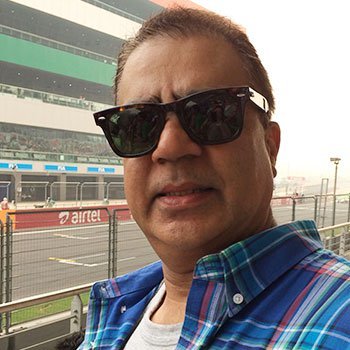 Do you find memory techniques like the Memory Palace daunting?
Do you find memory techniques like the Memory Palace daunting?
Not sure where to begin with your Magnetic Imagery?
And are you having a hard time getting creative and wish you could just leave the “heavy lifting” to the experts?
Believe me, it’s not just you.
I receive so many emails from students of memory and lifelong learners just like you.
People searching for help…
Asking for mnemonic examples…
Guidance that will make creating and using their Memory Palaces easier…
Tips that will turn the average imagination into a fast-acting mnemonics dictionary.
Need A “Hand Up” With Memory Palace Creation
While I still believe you learn the most by doing it yourself by creating your own Memory Palaces and “00-99 P.A.O.” from “scratch,” I understand that people sometimes need a “hand up” to get started.
In fact, I’ve learned over the years that for some people, personal guidance is a key element. That’s why I created the MMM Memory Dojo. It’s a weekly option for MMM Masterclass members who need additional help with priming their minds for committing information to memory using memory techniques.
And since this option only has the value its members bring, I’m delighted to have some of the best and brightest thinkers about memory techniques participating in the Memory Dojo week after week.
On today’s episode of the Magnetic Memory Method podcast, my long-time student, Sunil Khatri, shares his experiences of progressing from a beginner memory pupil with a desire to learn Korean and Japanese, to a visionary app-builder, seeking to help students more easily develop and visualize spatial memory.
Just check out his concept for a Memory Palace memory training app that will help you memorize the Periodic Table of Elements:
Now, you may remember Sunil’s name, as he has guest-hosted the podcast before, detailing his Speech Success Story.
And if you are searching for an inspirational success story to motivate you to start creating your own victories in memory improvement, or perhaps need a bit of guidance, Sunil’s experience is brimming with answers.
Press play above now to hear Sunil and I share:
How to make a great first (and lasting) impression on others by remembering their names
How to use everyday surroundings in new ways to create memory palace networks
The potential of apps as legitimate memory training tools
All the most important details of Sunil’s massive success with learning Japanese using mnemonics
Why you need a flexible memory method
The truth about Using Remembering the Kanji by James Heisig for language learning
How to develop memory reserve with memory techniques and language learning
Writing as a study technique to commit terms to memory
The importance of group discussions in experiencing success with mnemonics
How virtual reality may be the future of memory techniques
EPISODE BONUS: Exciting Bridging Figure Mnemonic Example
It turns out that Sunil is also a pretty adventurous guy.
When he sent me this image I instantly realized he is now a great Bridging Figure:
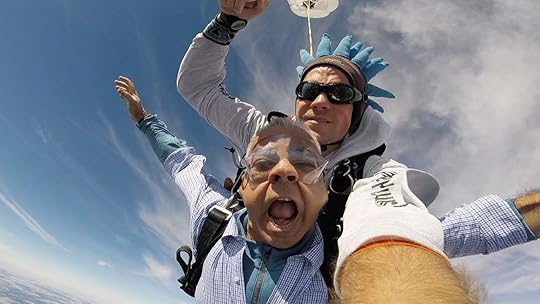
Any time you can use images like these of people you know, you’re already using memory techniques better.
Why?
Because this image of Sunil skydiving is naturally exaggerated.
It’s also colorful, large in the frame, and indicates a lot of speed.
Keep an eye out for images of your friends and actors like these!
And as if this bonus from Sunil wasn’t enough, check out these…
Further Resources on the Web, This Podcast, and the MMM Blog:
How to Enhance Your Memory with Virtual Memory Palaces
Remembering the Kanji on Amazon
How to Learn and Memorize the Vocabulary of Any Language Course
Teach Yourself Using the Best Language Learning Books by Olly Richards
How Kevin Richardson Turned His Memory Palace Network Into The Best Japanese Learning App
Why Bilingualism Makes For A Healthier Brain
The post From Mnemonics Beginner To Memory Palace Mastery with Sunil Khatri appeared first on Magnetic Memory Method - How to Memorize With A Memory Palace.
January 24, 2019
3 Powerful Visualization Exercises [Step-by-Step Walk-Through]
 What comes to mind when you think about visualization exercises?
What comes to mind when you think about visualization exercises?
Does the simple phrase conjure up images of some woo-woo, fluffy mind game offered by a two-bit guru?
Or are you ready for the real deal from a guy who struggled to see pictures in his mind and almost failed, but…
… after hundreds of hours of struggle, finally found a way?
(I‘m that guy, by the way)
And what if I told you that I’ve discovered something profound about visualization?
Why Visualization Is Not Just About “Seeing Pictures” In Your Mind
I’ve discovered a simple process that suggests everything you thought you knew about “seeing pictures in your mind” is wrong?
Especially when it comes to memory techniques, the Memory Palace and everything related to mnemonics
There are at least 8 Magnetic Modes:
Kinesthetic
Auditory
Visual
Emotional
Conceptual
Olfactory
Gustatory
Spatial
And “seeing” is just one of them!
Multiple Modes Of Visualization Doesn’t Mean You Shouldn’t “See” Mentally”…
Now that you know there are so many different ways to visualize, would you give few alternative visualization exercises a try?
If you said “yes,” or are at least nodding your head in the affirmative, that’s wonderful. Read on.
Did you know that visualization is so much more than meditation, and can actually serve you in your everyday life as a mature learner in a practical way?
Again, it’s more than seeing pictures in your mind.
But don’t get me wrong!
 The ability to conjure up mental pictures is a great skill. Some people with aphantasia can’t do it at all.
The ability to conjure up mental pictures is a great skill. Some people with aphantasia can’t do it at all.
But let’s not disregard our other senses.
Visualization is at its most powerful when embedded in a multi-sensory experience.
Here are three exercises that show you exactly how:
3 Beginner Visualization Exercises Anyone Can Master
1. The Candle Exercise
Try this:
Take a moment and close your eyes. Imagine that when you open them a candle has appeared in front of you.

Consider:
What size is the candle? Is it a tea candle, long-stem candle, three-wick candle?
How heavy is it?
How much of the candle has burned away? Has it burned down to the base or do you see it still newly lit?
How far away is the candle from you? Within arm’s reach? Across the room?
The Lit Candle Variation
You can also try gazing into a lit candle then closing your eyes.
What do you see?
If you’re anything like me, you’ll experience an after burn effect.
You can no longer “see” the candle, but can still see its effects.
Using this after burn as a kind of canvas, mentally trace over the shape in front of you.
2. The Apple Visualization Exercise
Gradually you will be able to visualize, in great detail, a candle and flame of your own making.
We can take this simple visualization one step further and incorporate our other senses once we have mastered the “visual” aspect.
Try visualizing an apple.

Feel its smooth peel, observe its perfectly ripe sheen, and then imagine yourself taking a bite.
How does it taste?
Imagine its crispness and taste its sweetness.
The Interaction Variation
Take this apple visualization exercise further:
Follow the apple through your body as your entire digestive system interacts with it.
Don’t take this exercise too seriously or get too granular. Just play with the idea of being able to follow one bite of an apple through your system.
And ask yourself periodically as you go through the process:
How real is that apple to you?
The Negative Space Variation
Once you feel like you can move beyond seeing and feeling a simple, everyday object, try to visualize that object in relation to space in the room.
Imagine the corner of a table.

Where is it in the room? What is the negative space surrounding it?
Think of this exercise almost as an optical illusion.
We are all familiar with Rubin’s vase, though we may not know it by name.

This is the optical illusion where one can see either two faces or a singular vase from an image.
The key is being able to toggle between the two.
To be aware of the negative space as well as the image.
This exercise is helpful when using mnemonics, a Memory Palace and other memory techniques because we need to “suppress” mental imagery at the same time we manipulate it.
3. The Number Skipping Exercise
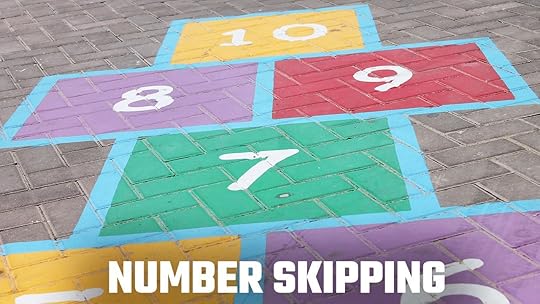
Think about this:
How abstract are numbers?
They are representations of concepts, right?
Take the number three, for example.
Three only “exists” when we conceptualize a group, or a set of objects, and call it three due to concept of three things we call “one” placed together.
How is three represented exactly?
Well, lots of ways. The Chinese character differs from the Roman numeral, which differs from the character 3. Three is represented based on a mark society agrees it will call “3.” You can see the 3 your culture uses, or multiples versions used by multiple cultures.
Three is represented based on a mark society agrees it will call “3.” You can see the 3 your culture uses, or multiples versions used by multiple cultures.
You can also visualize one to 10, to 20, or even to 1,000.
Start with a small goal…
…but the goal is not to reach the highest number!
It’s to stay connected and concentrated in your mind.
If you find this becomes so easy that your mind is wandering, you can build up to higher and higher numbers, eventually going forwards and backwards.
And that’s when the real challenge begins:
Skipping numbers.

I first encountered the idea of skipping numbers in Gary Weber’s Happiness Beyond Thought. This is such a simple idea, but yet it’s such a challenge.
Don’t believe me? Give it a try.
Visualize the number one.
Easy enough, right?
Now try to suppress the urge to visualize the number two.
Next, is three, correct?
Skip, or visualize a blank space in place of the number four.
Keep building, skipping numbers as you go.
Once you reach the highest number you can without losing concentration (say, for example, 10), then go in reverse. Visualize 9, skipping 8, 7, and skip 6, and continue on.
You may be asking “How is this useful? Isn’t this a bit counterintuitive? Am I not supposed to be visualizing? Why are you suddenly telling me to suppress visualization?”
I get you. I do. But hear me out and keep reading…
The Negative Space Variation
Remember, for memory training one of the keys is Recall Rehearsal.
You will find ways to use memory palaces in different orders, and actually need to, and want to, for memory benefits, get the von Restorff Effect working.
You can shut down thoughts so that they do not interfere with other thoughts. This visualization exercise will undoubtedly aid you in further memory training.
In other words, the ability to not visualization helps you visualize because you can shut out competing images.
Speaking of further training…
The New Visualization Mastery Course in The MMM Masterclass!
If you’re still struggling to visualize when using memory techniques…
I just finished producing a powerful course that is already helping Magnetic Memory Method Masterclass students use mnemonics better.
This result happens because the Magnetic Imagery they use in their associations are far stronger than ever before.
Do you want that?
Do you want to “own” any information every time you place it in your brain?
Cool. I can help.
But take caution:
As we’ve discussed today…
It’s not that easy if you’re only using visualization techniques to “see” pictures in your mind.
The solution begins when people take things to the next level of use a kind multi-sensory visualization approach.
And in this new course, Visualization Mastery…
I didn’t JUST come up with these exercises out of nowhere.
I did it with the help of dozens of memory athletes, memory experts like John Graham, thousands of MMM students and hundreds of hours of my own practice.
In this course, Visualization Mastery, you get the insights, skills, and ability to develop the strongest mental imagery for your Memory Palace efforts ever…
And the calm confidence that tells your brain that you’re serious about memorizing information quickly, efficiently and permanently.
This course in visualization and visualization meditation includes:
Video 1: Multi-Sensory Projecting
Video 2: Exercises for Conceptual Visualization
Video 3: “Details” Exercises For Multi-Sensory Self-Study
Video 4: Visualization Meditations
Video 5: Auditory-Visual Exercises
Video 6: Mental Rehearsal Exercises
Video 7: Conclusion & Next Steps
For more information, here’s the course trailer:
If you’re already in the MMM Masterclass, please login now to take the course.
Or, if you’d like access this special training course and much, much more, you can read all about the Magnetic Memory Method Masterclass here.
The Bottom Line When It Comes To Effective Visualization For Memory Improvement
Complete these visualization exercises regularly and consistently. Don’t expect results from just one session.
Also, mix and match these exercises. For example, try number skipping with candles or apples, both forward and in reverse.
Really, the sky’s the limit here. The more you play with this visualization exercise, the more benefits you will receive and the more ideas for more brain exercises will emerge.
Above all, keep challenging yourself and your memory for growth. It’s when we stop getting brain exercise that we go downhill. These visualization exercises will help you keep moving forward.
The post 3 Powerful Visualization Exercises [Step-by-Step Walk-Through] appeared first on Magnetic Memory Method - How to Memorize With A Memory Palace.
January 17, 2019
Idriz Zogaj On The Truth About Memory Training Apps
 Ever wondered if you can just invent a Memory Palace… or have a memory improvement app invent one for you?
Ever wondered if you can just invent a Memory Palace… or have a memory improvement app invent one for you?
Turns out, the answers to these questions are more than just interesting…
They could be the answers that turn you from a person struggling to improve your memory to a leading memory athlete.
After all, Idriz Zogaj has done just that.
And chances are, you know the name.
After all, he’s the man behind what is probably the world’s most viewed memory improvement TedTalk.
In addition to being a world class memory athlete and memory coach, he’s also an entrepreneur.
And when I heard about his initiative to launch a memory game and app called Memotopia, I reached out to learn more.
Best part?
We recorded our call just for you!
Key Points About Memory Training Apps
The highlight of the episode for me involved two key points:
Idriz has figured out a way to create a memory training app that lets you train solo and with others. And it’s all focused on getting you to use the skills in your mind, not on the screen. To learn all about it, please watch the Memotopia video on this page for the project.
In his previous experience with memory apps, Idriz has shown how people of even very young ages can use technology to learn the basics of association.
Why is this demonstration with younger people so profound?
Because association is the core skill of using memory techniques.
And the best part is this:
Anyone can learn to associate.
You don’t have to take my word for it. Just check out Idriz’s explanation of how easy improving your memory is in this epic memory training video:
You’ll hear Idriz talk about the history of his apps for memory training on the podcast, and can check out the earlier Zogaj Gym here on the Apple Store and here for Android.
The Truth About Virtual Memory Palace Creation And Use
My second favorite part of the episode involves our discussion of creating and using a Virtual Memory Palace (or even dozens of them).
I’ve talked about my reservations about using Virtual Memory Palaces and even movies and TV series to improve your memory before, but Idriz opened my eyes to an incredible fact I did not know before.
The point?
My own advice to keep studying the memory tradition and all the people who use it keeps paying off – there’s so much to learn!
More Memory Training Resources From Idriz Zogaj
The post Idriz Zogaj On The Truth About Memory Training Apps appeared first on Magnetic Memory Method - How to Memorize With A Memory Palace.
January 9, 2019
1200 Digits: How to Memorize Pi And Recite It Live
 Ever wondered how to memorize pi?
Ever wondered how to memorize pi?
Marno Hermann did…
… and then he got busy memorizing as much of pi as he could.
The amazing thing is just how far Marno got based purely on rote learning!
Then it happened.
Marno discovered memory techniques and vastly accelerated his progress.
In this interview, I ask Marno about the differences between memorizing so many digits of Pi using rote and using Memory Palaces with mnemonic imagery.
Before long, Mano had memorized 1200 digits and secured a top spot on the Pi World Ranking List!

“Always believe in the impossible,” is what Marno wore on his shirt when he stepped up to the podium to recite 1200 digits of Pi.
And he recited all 1200 digits in just 10 minutes and 15 seconds!
Yet…
How To Set The Record Straight When You Memorize Pi And Make A Mistake
Even as Marno proved to himself and the large crowd of people assembled to hear him recite Pi…
Something went wrong.
You’ll need to listen to this powerful episode of the Magnetic Memory Method Podcast to learn all about what happened and how Marno set the record straight.

I’m very impressed by Marno’s story, and you will be too.
Do You Want To Memorize Pi?
If so, you’re not alone.
And Marno isn’t the only Magnetic Memory Method Family member to use the techniques.
Check out Paul Deery’s incredible performance in front of a crowd:
The trick?
Well, as we’ve learned from Marno, you actually can get quite far with rote learning.
But obviously you’re going to want to have mnemonic tools to help.
Why Should You Memorize Pi?
Great question.
Although I’ve never done it myself, the benefits are obvious:
1. Memorizing any amount of Pi will help you prove to yourself that you can do it.
Still doubtful? Here’s 3 Reasons Why Skeptics Success With Memory Techniques Better Than Anyone Else.
2. You’ll be able to memorize any banking number, phone number, historical date, plane seat or price with ease.
3. You’ll experience the real magic of memory techniques in a way that will inspire you to take on more challenges.
4. If you’re a parent, you can demonstrate the technique to your kids and wipe out their anxiety around math for the rest of their lives.
5. It’s great brain exercise.
6. You can extend the skills to memorizing a deck of cards for memory stunts and magic routines.
7. You’ll become an active participant in this great tradition of using your natural creativity and the Memory Palace.
Further Resources That Will Help You Memorize Pi
First, consider learning the Major Method.
You’ll want to use that to create a 00-99 P.A.O. More on that coming soon, so to be notified, if you’re not already part of the MMM Family, start here now:
Brad Zupp has helped us learn how to memorize numbers when he shared his mnemonic tips for turning your brain into a passwords manager.
Florian Dellé has shared his Major System Secrets on the show as well.
Nelson Dellis has great training on this extensive interview tutorial on visual memory techniques based on his book Remember It!
You’ll also want to learn the 3 Most Powerful Memory Techniques For Memorizing Numbers to supplement your success.
(For the musically inclined, here are some ideas for applying memorized numbers to music mnemonics).
So what are you waiting for?
Scroll up, click play and listen to Marno share exactly how he memorized 1200 digits of Pi and how you can easily do the same.
The post 1200 Digits: How to Memorize Pi And Recite It Live appeared first on Magnetic Memory Method - How to Memorize With A Memory Palace.




